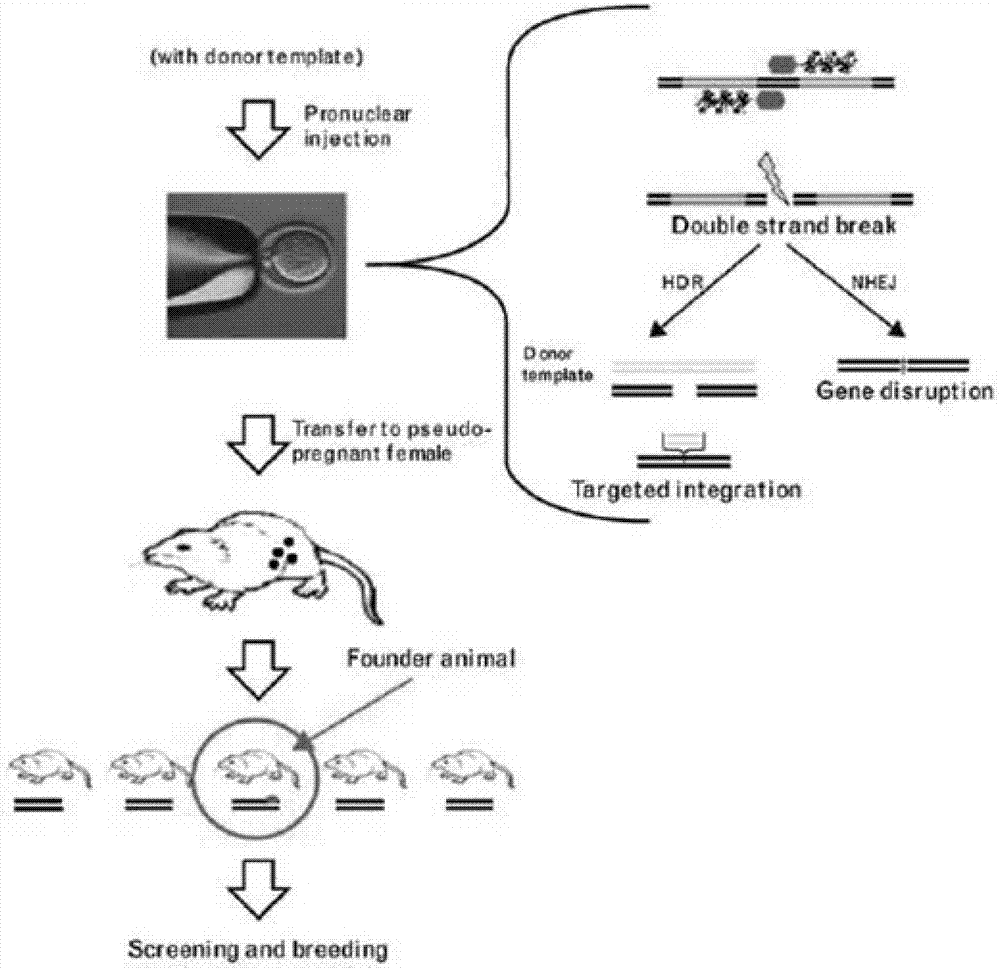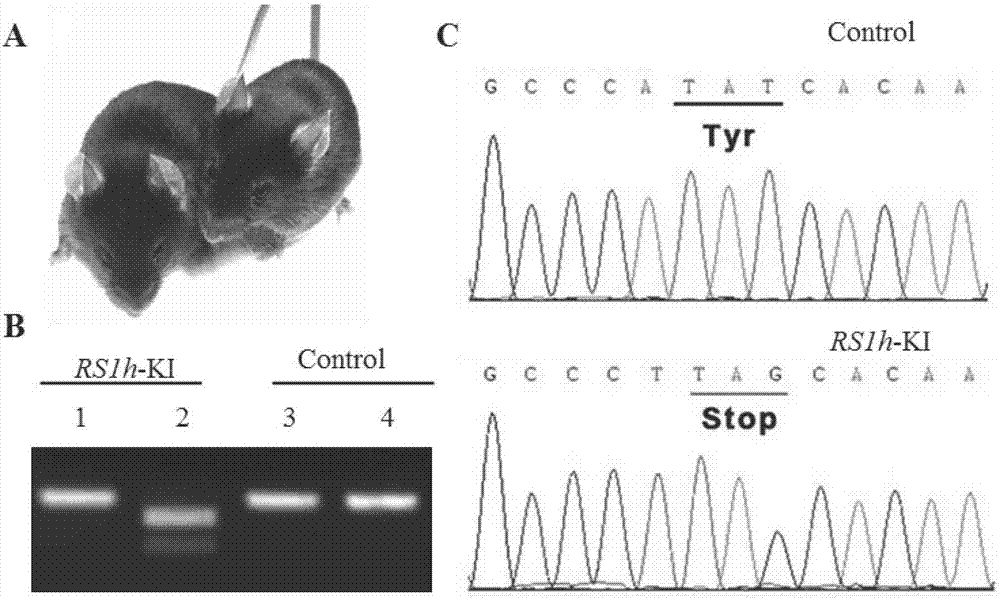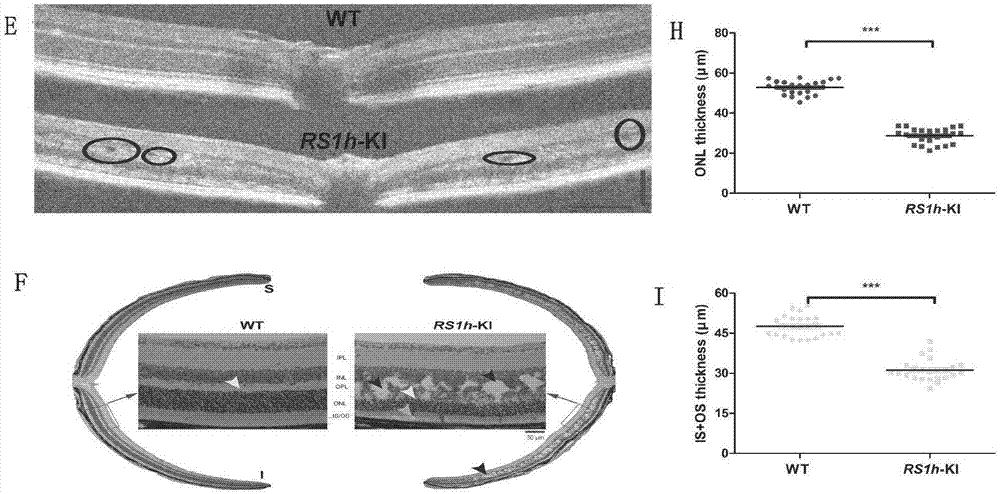Human-derived retinoschisis transgenic mice model and construction method thereof
A technology for retinoschisis and transgenic mice, which is applied to other methods of inserting foreign genetic materials, genetic engineering, plant genetic improvement, etc., to achieve the effect of enriching experimental animal subjects
- Summary
- Abstract
- Description
- Claims
- Application Information
AI Technical Summary
Problems solved by technology
Method used
Image
Examples
Embodiment Construction
[0021] The present invention will be further described below in conjunction with specific embodiment:
[0022] combined with Figure 1-4 , Example 1, a method for constructing a human-derived retinoschisis transgenic mouse model of the present invention, human-derived RS1 Gene-based screening of human disease-causing genes knocked into mice by gene editing means to obtain the same clinical symptoms as patients RS1h -KI mouse disease model.
[0023] A method for constructing a human-derived retinoschisis transgenic mouse model, using TALENs technology, obtained by screening XLRS patients RS1 For the mutation site of the gene, design the same Oligo sequence as that of the XLRS patient, construct the vector, transfer it into the cell, and screen to obtain the RS1 Stable cell lines with genetic mutations. Express in vitro, isolate mRNA, microinject fertilized eggs and transfer embryos into the uterus of F0 generation, and reproduce to obtain F1 generation with stable phenotyp...
PUM
 Login to View More
Login to View More Abstract
Description
Claims
Application Information
 Login to View More
Login to View More - R&D
- Intellectual Property
- Life Sciences
- Materials
- Tech Scout
- Unparalleled Data Quality
- Higher Quality Content
- 60% Fewer Hallucinations
Browse by: Latest US Patents, China's latest patents, Technical Efficacy Thesaurus, Application Domain, Technology Topic, Popular Technical Reports.
© 2025 PatSnap. All rights reserved.Legal|Privacy policy|Modern Slavery Act Transparency Statement|Sitemap|About US| Contact US: help@patsnap.com



